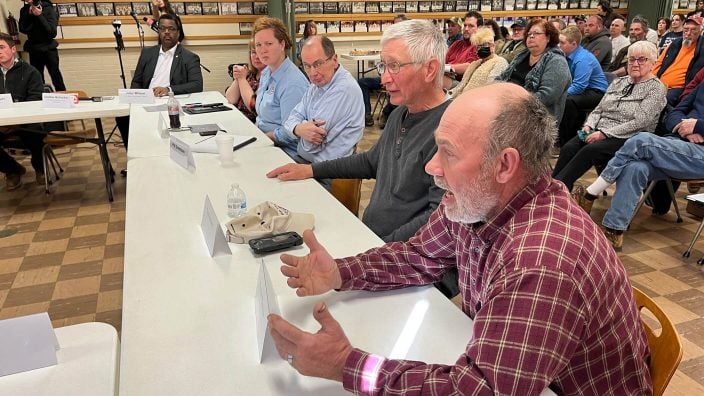USDA rolls out Farmers First: Small Family Farms Policy Agenda
After nearly 100 days of traveling the nation and visiting directly with hundreds of farmers across America, U.S. Secretary of…
Read MoreThe meeting brought together Ohio Department of Agriculture Director Brian Baldridge, the governor’s team, scientists from Ohio State, representatives from Ohio and U.S. EPA, SWCD, USDA, county and state officials, and more than a dozen farmers for a frank discussion on where things stand today.
Milk leaves Scott Lindsay’s Pine Hill Jersey Farm every day like clockwork, on its way to be made into cheese that is sold throughout the country.
The trucks carrying his life’s work have continued to roll away from the farm in the wake of the Feb. 3 Norfolk Southern train derailment in East Palestine, four miles from his business. Everything is operating as normal and on time, he said. The Columbiana Farm Bureau member’s cows, by all accounts, are perfectly fine as well.
And still.
“I live in fear that I’m going to get that call (from his distributor) and they say, ‘in an abundance of caution we can’t take delivery…’” he said, letting the thought that is on many farmers’ minds trail away.
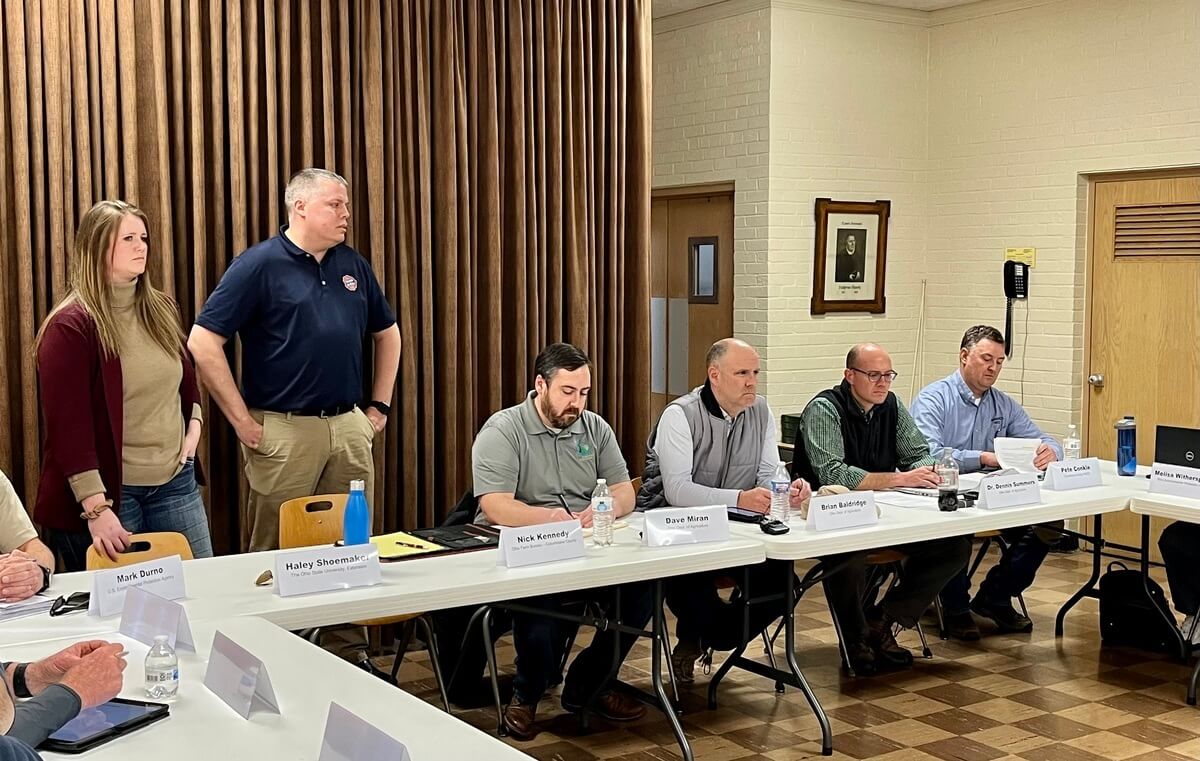
As fears from farmers mounted in the weeks following the train derailment that rocked northeast Ohio and grabbed the attention of the nation, Columbiana, Mahoning, Portage and Stark counties Organization Director Nick Kennedy and Ohio Farm Bureau lobbied local, state and federal authorities to listen to members about the need for water and soil testing, as well as their significant concerns about market share loss based on consumer perception and the upcoming planting season following a very mild winter.
Gov. Mike DeWine’s administration listened. A packed roundtable meeting March 9 in Salem, helmed by Ohio Department of Agriculture Director Brian Baldridge, a farmer himself, brought together the governor’s team, scientists from Ohio State University, representatives from Ohio and U.S. Environmental Protection Agencies, Soil & Water Conservation, USDA, county and state officials, and more than a dozen farmers for a frank discussion on where things stand today. An audience of at least 50 people observed the roundtable discussion, as well as multiple media outlets.
What they heard was, as quickly as possible, soil and water tests are being developed and conducted, site run-off monitoring is taking place, and livestock have shown no signs of illness or lingering effects from the aftermath of the derailment itself or the chemical burn-off that followed.
State Veterinarian Dr. Dennis Summers, who has been in constant contact with ODA, his counterpart in Pennsylvania, meat inspectors, farmers and local veterinarians, emphasized that he has had “zero reports” of livestock illnesses from the event.
“There has been nothing since the derailment to support that our food safety supply has been compromised. None,” he said, noting that what is being posted on social media is “dis-information.”
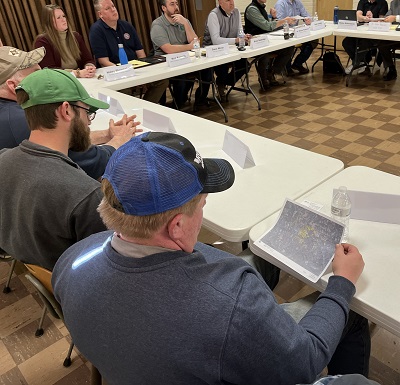
Mark Durno from U.S. EPA talked about the soil sampling program, both on what can still be detected on the ground and what is up to six inches below, that began March 9. As many as 300 areas will be tested for various toxins, focusing on semi-volatile-organics, dioxins and pyrans. Initial results will be ready in 7-12 days after the tests are conducted, he said.
Those results will be disseminated through trusted partners, including Ohio Farm Bureau, Baldridge said.
Ohio Farm Bureau District 9 State Trustee Danielle Burch, a Columbiana County farmer, said the productive roundtable discussion underscored that “ag is a general driver of the economy and important in our area. The governor, ODA, understand that and hear our concerns. They are working (on answers).”
Ensuring the continuation of a safe food supply and robust farm economy is top of mind for Governor DeWine and ODA, Baldridge said.
“That is the reason this meeting took place,” Kennedy said. “These are real concerns. Farm Bureau brought these entities together to let farmers and consumers know that their concerns are being heard and addressed.”
In the end, Lindsay said he felt heard after the meeting.
“I feel much better,” he said. “I know that people are working on the answers. We’re not there yet, but we’re getting there.”
Feature image caption: From left State Trustee Danielle Burch (blue shirt), and Columbiana County Farm Bureau members Phil Greenisen, who is the policy chair on the Columbiana County Board of Trustees; Tom Richey and dairy farmer Kevin Baker (speaking).
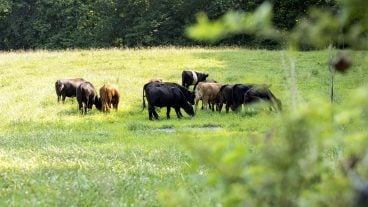

After nearly 100 days of traveling the nation and visiting directly with hundreds of farmers across America, U.S. Secretary of…
Read More

Over 20% of all the production in the United States from agriculture gets exported to a different country.
Read More

On this Ohio Farm Bureau Podcast, get an update on challenges borrowers are facing in 2025 from experts at Ag Credit and find out how the current state of agriculture is affecting the organization.
Read More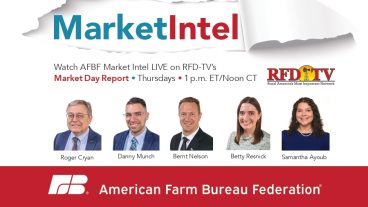
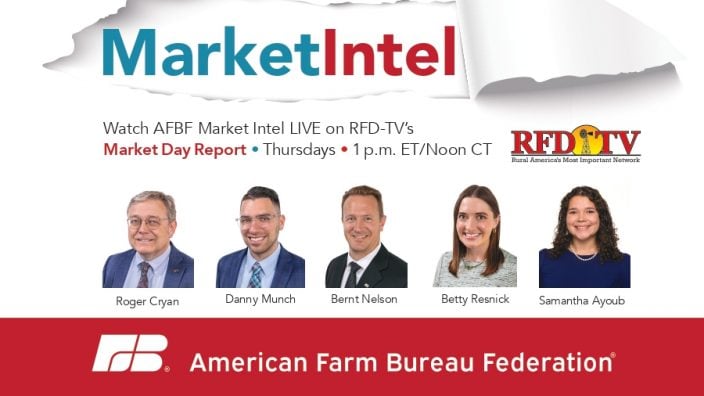
Ohio Farm Bureau has collected information and resources that will be updated as the trade and tariff situation continues to unfold.
Read More

The plan provides a blueprint for policymakers and Ohio Farm Bureau members to bolster Ohio’s agriculture industry and our rural communities.
Read More
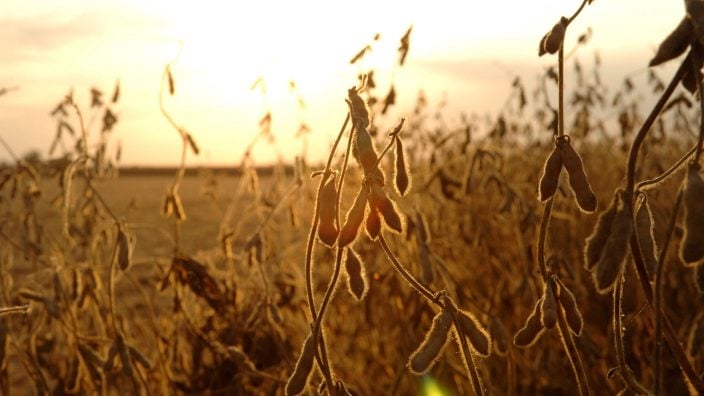
Update: As of Feb. 27, 2025, the Financial Crimes Enforcement Network announced they would not issue any fines or penalties or take enforcement action against companies based on failure to file or update beneficial ownership information reports by the March 21, 2025, deadline.
Read More

Update: As of Feb. 27, 2025, the Financial Crimes Enforcement Network announced they would not issue any fines or penalties or take enforcement action against companies based on failure to file or update beneficial ownership information reports by the March 21, 2025, deadline.
Read More

Update: As of Feb. 27, 2025, the Financial Crimes Enforcement Network announced they would not issue any fines or penalties or take enforcement action against companies based on failure to file or update beneficial ownership information reports by the March 21, 2025, deadline.
Read More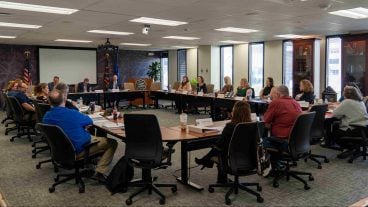
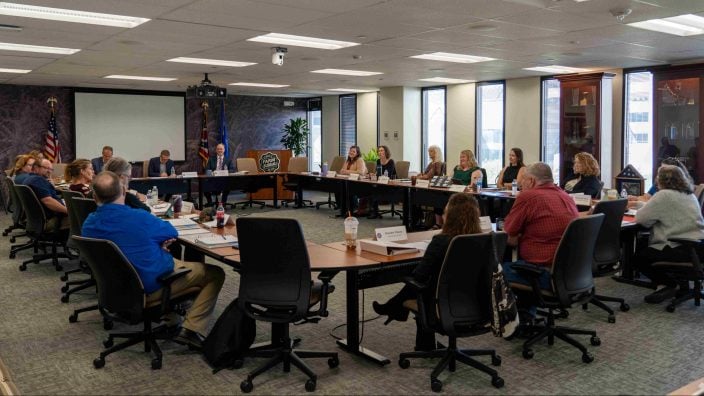
On this Ohio Farm Bureau Podcast, Columbiana County Farm Bureau leader Stacy Irwin talks about this year’s policy development process and some of the topics that were discussed.
Read More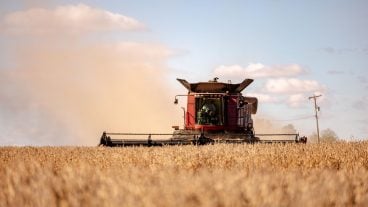
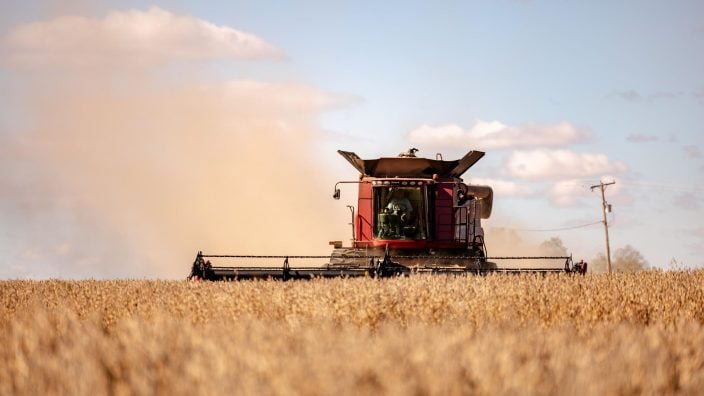
Update: As of Feb. 27, 2025, the Financial Crimes Enforcement Network announced they would not issue any fines or penalties or take enforcement action against companies based on failure to file or update beneficial ownership information reports by the March 21, 2025, deadline.
Read More